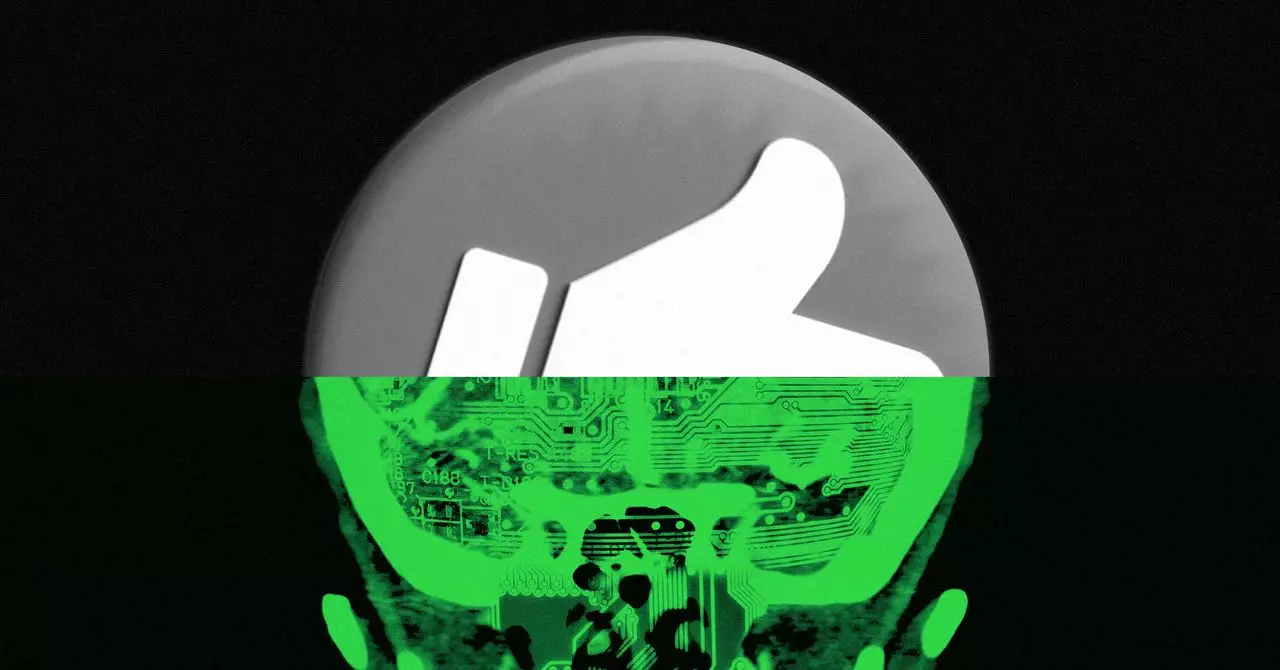In today’s rapidly evolving digital landscape, the relationship between artificial intelligence (AI) and human interaction is becoming increasingly complex. As powerful as AI may be, its effectiveness hinges largely on the data it learns from, particularly that which signifies human preferences and behaviors. This brings us to a pivotal tool in social media interactions: the like button. Max Levchin, co-founder of PayPal and CEO of Affirm, positions the like button as a transformative asset for AI training, underscoring its potential to bridge the gap between AI decision-making and human judgement.
The crux of the challenge lies in machine learning’s inherent quest for perfection via reinforcement learning. Algorithms thrive on a reward system, continuously refining their methods for optimal performance, but this often leads to results that diverge from human values. To recalibrate AI outputs, developers employ Reinforcement Learning from Human Feedback (RLHF), a process which introduces human variables into the learning algorithms. However, one stark issue remains: the sheer expense of acquiring human feedback. Levchin believes that the vast troves of preferential data sourced from the likes on social platforms, particularly from Facebook, could provide a solution, offering an invaluable resource for developers striving to train AI systems that resonate more closely with genuine human preferences.
The Like Button’s Role in Shaping AI Models
Levchin’s assertion that the like button possesses tremendous latent value cannot be overstated. The data produced from this simple interaction acts as a goldmine for understanding human sentiment. Essentially, when a user taps the like button, they are not merely expressing approval; they are feeding a machine-algorithm an essential piece of the puzzle that enables an AI model to learn and evolve based on conducted preferences. Levchin describes this amassed “mountain of liking data” as one of the most vital assets available online. In a world that increasingly relies on data to inform decisions, the implications of this resource stretch far beyond simple marketing analytics.
Utilizing such data for training AI can greatly enhance these models, resulting in better alignment with human thought processes and emotional responses. This becomes especially critical as AI begins to infuse itself into design decisions across social media platforms, redefining how content is delivered and consumed. However, while Levchin emphasizes the importance of the like button for training data, an all-too-real concern arises: as AI continues to refine its algorithms, there’s a question of whether the like button itself might become an outdated relic.
The Evolution of User Interaction
While Levchin advocates for the utilization of the like button as a critical data source, he acknowledges that AI is already reshaping how these likes are assessed. Contemporary algorithms are being designed to predict user preferences, potentially rendering the like button obsolete. Social media giants like Facebook are experimenting with advanced AI tools to analyze viewer interactions, ultimately aiming to craft algorithms that can predict content reception with stunning accuracy. The sophistication of these AI systems could lead to a more frictionless user experience where the explicit expression of liking content becomes unnecessary.
YouTube co-founder Steve Chen contemplates the fate of the like button in this context. As AI capabilities expand, one might envision a scenario where algorithms could deduce user preferences with absolute certainty based solely on behavioral patterns rather than the need for explicit feedback like that of the like button. There is, however, a caveat: life’s unpredictable nature. Chen aptly points out that users may occasionally desire to consume content that caters to fluctuating personal circumstances. The transient nature of human emotions means that users might occasionally need to vocalize their shifting preferences, something the like button currently facilitates.
Connecting Advertisers, Viewers, and Creators
Beyond its role as a mere preference indicator, the like button serves a critical function in enhancing the dynamics among viewers, content creators, and advertisers. With a single tap, viewers communicate their engagement while simultaneously providing valuable insights to advertisers. This trifecta is essential for sustaining the ecosystem of social media, where advertisers are eager for tangible indicators of user preferences to inform their marketing strategies.
Herein lies another reason for the like button’s enduring relevance; its simplicity in conveying both feedback to content creators and engagement metrics to advertisers ensures its integral place even as AI continues to climb to new heights of sophistication. Thus, while the potential to streamline user interactions may arise from predictive algorithms, the like button remains an indispensable mechanism, connecting disparate elements of the social media universe—an unassuming yet powerful tool that could shape AI’s evolution.


Leave a Reply